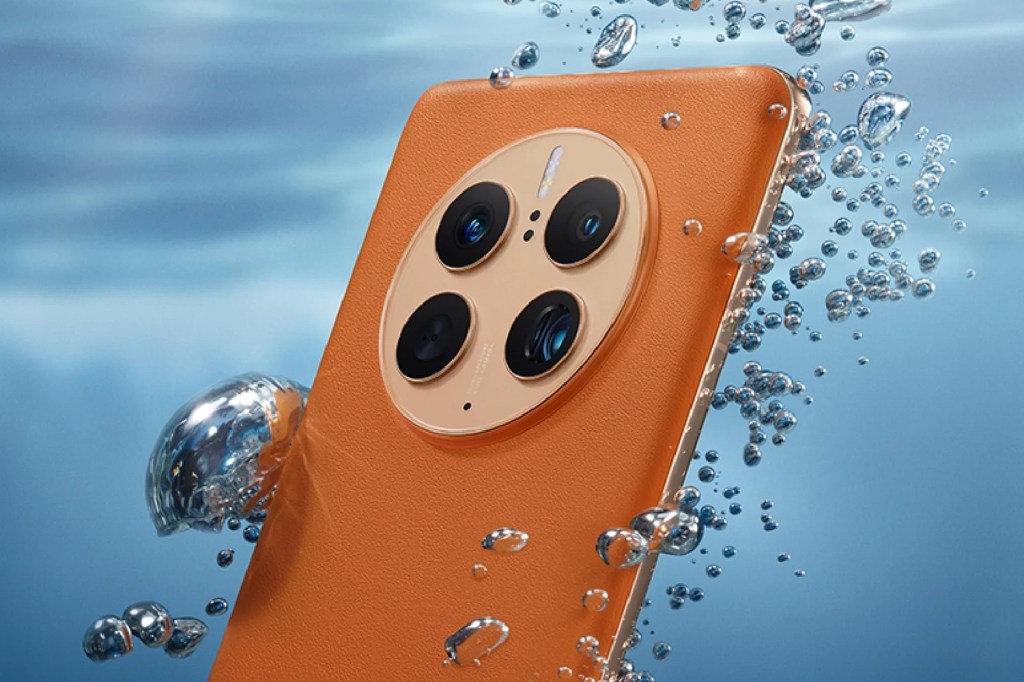
The latest top-tier Huawei smartphone arrived in China last month, and has now been given the green light for a European rollout. With a quad-camera arrangement that uses world-first aperture tech, the Huawei Mate 50 Pro promises impeccable photography for a smartphone, along with flagship-grade performance.
The headline-grabber is the 50MP main sensor, which has a 10-stop, f/1.4-f/4.0 physical aperture – something unique in the phone world, and more in common with traditional cameras. It’ll give you the choice of extreme bokeh, or pin-sharp shooting, while optical image stabilisation and an RYYB colour filter promise fantastic low-light performance as well.
It’s paired with a 64MP periscope lens good for 3.5x optical zoom, a 13MP ultrawide that’ll double as a macro snapper, a proximity light sensor and laser autofocus, which should combine to make it one of the most versatile smartphone shooters going. There’s also a 3D face unlock selfie cam hidden under a notch on the front of the phone.
Design-wise, the Mate 50 Pro is an evolution of the “space ring” symmetrical design seen on previous Mate models, with a giant circular bump for the comprehensive rear cameras. It either blends glass and aluminium if you go for the black or silver colour options, or aluminium and vegan leather on the orange version.
The latter gets bespoke Kunlun glass, which Huawei reckons is up to 10x more durable than regular glass and should better withstand accidental drops. It’s also water resistant down to 6m, while the glass variants are only good down to 2m. All versions are IP68 water resistant.

Up front, the Mate 50 Pro is packing a 6.74in OLED display with 2616×1212 resolution, 120Hz refresh rate an 10-bit panel good for 100% coverage of the DCI-P3 colour space. It’ll also manage HDR playback, and is paired with a set of stereo speakers.
Power comes from a 4G variant of Qualcomm’s flagship Snapdragon 8+ Gen 1 CPU, as Huawei is still being restricted by the US government when it comes to certain hardware. It’s paired with 8GB of RAM and as much as 512GB of on-board storage, with Huawei’s own NM media card support for adding extra capacity later.
It’ll be the first Huawei phone released in Europe with EMUI 13, the firm’s latest take on Android. It’s based on the open source version, rather than any particular version, which means no official access to the Google Play Store, but shares many of the features seen in Android 13, like extensive theme customisations and a new notification centre layout. There’s also widget stacking and smart folders to make better use of home screen space.
A 4700mAh battery aims to keep the lights on, with 66W wired charging and 50W wireless charging for rapid top-ups. It’ll also do reverse wireless charging to refuel gadgets like wireless earphones. Huawei has added a new low battery emergency mode, which kick in at 1% and should deliver enough juice for three hours of standby, or to make a 12 minute phone call.
An international arrival may be imminent, then – but Huawei has yet to reveal exactly when customers will be able to get their hands on one. We do know what you’ll have to pay, though: €1299 (£1150) for the 8GB+256GB variant in silver or black, or €1399 (£1250) for the vegan leather orange model with 512GB of storage.






